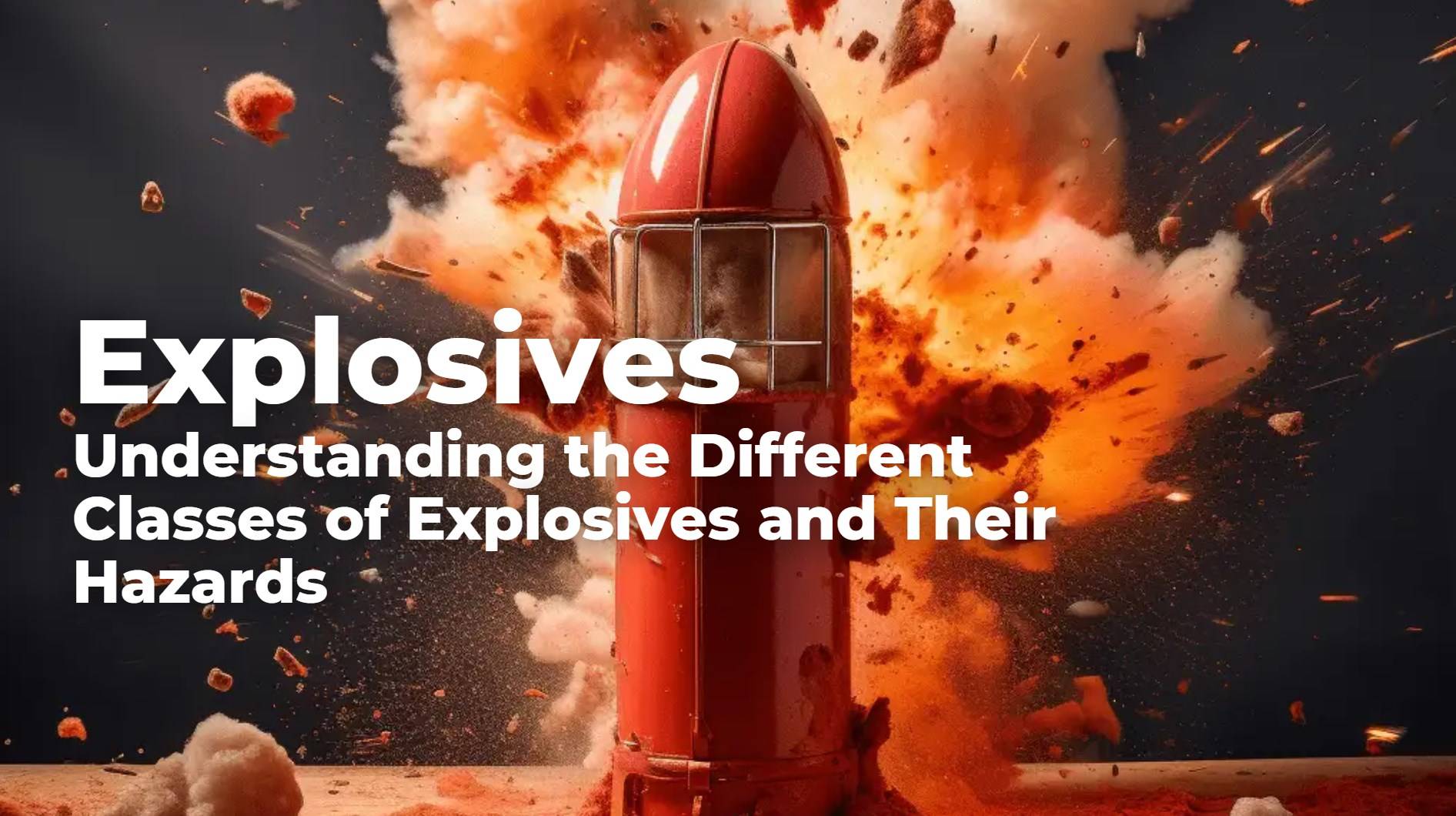Explosives play a critical role in various industries, including construction, mining, and defense. However, their potential for destruction necessitates a thorough understanding of their classifications and associated hazards. In this article, we delve into the different classes of explosives and examine their unique characteristics and dangers.
Class 1.1: Mass Explosion Hazard
Class 1.1 explosives are characterized by their ability to produce a mass explosion. This class includes substances and articles that can create an instantaneous explosion, affecting almost the entire load. Common examples include dynamite, TNT, and certain military-grade explosives.
Hazards: The primary danger with Class 1.1 explosives is their potential to cause extensive damage over a large area. In industrial settings, improper handling can lead to catastrophic accidents, necessitating stringent safety measures.
Class 1.2: Projection Hazard
Class 1.2 explosives do not produce a mass explosion but present a projection hazard. This means that in the event of an explosion, the primary danger comes from the projection of fragments. Examples include certain types of ammunition and fireworks.
Hazards: The projection of fragments poses significant risks to human life and infrastructure. Safety protocols must focus on mitigating the impact of shrapnel and ensuring safe distances are maintained during handling and transport.
Class 1.3: Fire Hazard
Class 1.3 explosives are less likely to cause mass explosions but pose a fire hazard and may produce minor blast or projection effects. This class includes substances like propellants used in firearms and some pyrotechnic compositions.
Hazards: The primary concern with Class 1.3 explosives is the potential for intense fires, which can spread rapidly and cause secondary explosions. Firefighting measures and preventive protocols are essential to manage these risks effectively.
Class 1.4: Minor Explosion Hazard
Class 1.4 explosives are designed to present only a minor explosion hazard. These are typically items like consumer fireworks and small arms ammunition, which are intended to have localized effects.
Hazards: While the risks are lower compared to other classes, the potential for injury and localized damage remains significant. Safety measures should focus on proper storage and handling to prevent accidental detonation.
Class 1.5: Very Insensitive Explosives
Class 1.5 explosives are very insensitive, meaning they have a low likelihood of exploding under normal conditions. These are often used in industrial applications where large quantities are handled, such as in mining operations.
Hazards: Despite their low sensitivity, the sheer quantity involved can pose a risk if not managed correctly. Safety protocols must account for the volume of material and the potential consequences of accidental ignition.
Class 1.6: Extremely Insensitive Articles
Class 1.6 encompasses extremely insensitive articles that pose a negligible risk of mass explosion. These include certain military munitions designed to withstand severe conditions without detonating.
Hazards: The risks associated with Class 1.6 explosives are minimal under normal handling conditions. However, comprehensive safety measures must still be in place to address any unforeseen circumstances.
Storage and Handling of Explosives
Proper storage and handling are paramount in mitigating the risks associated with explosives. Key considerations include:
- Segregation: Different classes of explosives should be stored separately to prevent cross-contamination and reduce the risk of a chain reaction in case of an accident.
- Ventilation: Adequate ventilation is crucial to prevent the accumulation of fumes, which can be highly flammable or toxic.
- Temperature Control: Explosives should be stored in temperature-controlled environments to prevent degradation and accidental ignition.
- Security Measures: Robust security protocols are necessary to prevent unauthorized access and potential misuse of explosive materials.
Regulatory Compliance
Compliance with local and international regulations is essential for the safe management of explosives. Regulatory frameworks typically cover:
- Licensing: Entities handling explosives must obtain appropriate licenses and permits.
- Training: Personnel must receive comprehensive training on the safe handling, storage, and disposal of explosives.
- Inspections: Regular inspections and audits ensure adherence to safety standards and identify potential risks before they result in incidents.
Emergency Response and Preparedness
An effective emergency response plan is critical for mitigating the consequences of accidental explosions. Key components include:
- Evacuation Plans: Clearly defined evacuation routes and procedures to ensure the safe and rapid removal of personnel.
- Firefighting Equipment: Access to suitable firefighting equipment and trained personnel to manage fire-related incidents.
- Medical Preparedness: On-site medical facilities and personnel trained in treating injuries specific to explosive incidents.
Environmental Impact
The production, storage, and disposal of explosives can have significant environmental impacts. Key considerations include:
- Waste Management: Proper disposal of explosive waste to prevent environmental contamination.
- Pollution Control: Measures to control the release of hazardous substances during the manufacturing and handling processes.
- Rehabilitation: Efforts to rehabilitate sites affected by the use of explosives, particularly in mining and construction.
Innovations in Explosive Safety
Advancements in technology are continually improving the safety of explosive materials. Innovations include:
- Smart Sensors: Use of sensors to monitor storage conditions and detect potential hazards in real-time.
- Advanced Materials: Development of more stable explosive compounds with reduced sensitivity.
- Robotics: Deployment of robots for handling and disposal of explosives in hazardous environments, minimizing human risk.
Conclusion
Understanding the different classes of explosives and their associated hazards is crucial for ensuring safety in industries that rely on these powerful substances. By adhering to stringent safety protocols, regulatory compliance, and leveraging technological advancements, we can mitigate the risks and harness the benefits of explosives responsibly.



